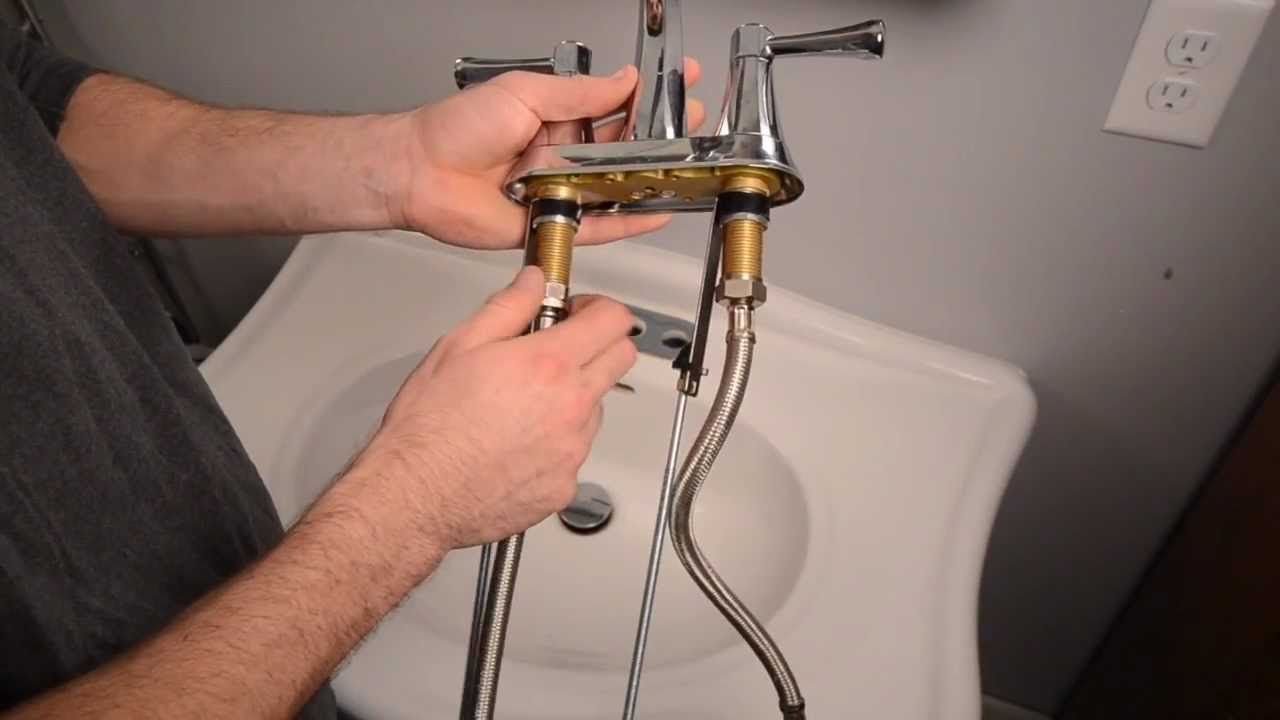Identifying Connection Types

Connect hose to bathroom faucet – When connecting a hose to a bathroom faucet, it is crucial to ensure compatibility between the hose and the faucet’s connection type. Different types of faucets require specific hose connections, and using an incompatible hose can lead to leaks or damage to the faucet or hose.
While connecting a hose to a bathroom faucet may seem like a straightforward task, it’s essential to ensure a secure and leak-free connection. If you’re seeking a touchless solution for your bathroom, consider the delta touchless bathroom faucet , which offers convenience and hygiene.
However, regardless of your faucet choice, proper hose connection is crucial to prevent water damage or inconvenience. Follow the manufacturer’s instructions carefully to ensure a long-lasting and trouble-free connection.
Faucet Connection Types
- Slip-on: Slip-on connections are the most common type and fit snugly over the faucet spout without the need for additional hardware. They are typically made of rubber or plastic and are available in various sizes to accommodate different spout diameters.
- Threaded: Threaded connections require a hose with a male threaded end that screws onto the female threaded faucet spout. These connections are more secure than slip-on connections and are often used for outdoor faucets or hoses that need to withstand higher water pressure.
- Quick-connect: Quick-connect connections use a locking mechanism to attach the hose to the faucet spout. They are easy to connect and disconnect and are often used for hoses that are frequently attached and detached.
Hose Sizes and Compatibility
In addition to the connection type, it is also important to consider the size of the hose when selecting a hose for a bathroom faucet. Hose sizes are typically measured in inches or millimeters and should match the diameter of the faucet spout. Using a hose that is too large or too small can result in leaks or reduced water flow.
Determining the Correct Hose
To determine the correct hose for a specific bathroom faucet, follow these steps:
- Identify the type of connection on the faucet spout (slip-on, threaded, or quick-connect).
- Measure the diameter of the faucet spout using a tape measure or ruler.
- Select a hose that has the correct connection type and size for the faucet spout.
By following these steps, you can ensure that the hose you choose for your bathroom faucet is compatible and will provide a secure and leak-free connection.
Connecting a hose to a bathroom faucet can be a simple task with the right tools. To ensure a secure connection, you may want to consider using a delta chrome bathroom faucet , known for its durability and stylish designs.
These faucets often come with easy-to-use connectors that make it effortless to attach a hose, allowing you to conveniently direct water flow for various tasks around your bathroom.
Step-by-Step Connection Procedure

Connecting a hose to a bathroom faucet is a straightforward task that requires minimal tools and materials. By following the step-by-step instructions Artikeld below, you can ensure a secure and leak-free connection.
Before beginning, gather the necessary tools and materials:
- Hose
- Faucet adapter
- Wrench
- Plumber’s tape (optional)
Attaching the Hose to the Faucet
- Select the appropriate faucet adapter for your faucet. Most bathroom faucets have a standard aerator that can be easily removed by hand.
- Wrap a few layers of plumber’s tape around the threads of the faucet adapter to create a watertight seal.
- Screw the faucet adapter onto the faucet by hand until it is snug.
- Tighten the faucet adapter using a wrench to ensure a secure connection.
Securing the Connection, Connect hose to bathroom faucet
- Attach the hose to the faucet adapter by hand.
- Tighten the hose connection using a wrench to prevent leaks.
Testing for Leaks
- Turn on the water supply to the faucet.
- Inspect the connections for any leaks. Tighten the connections further if necessary.
- Run the water for a few minutes to ensure the connection is secure.
Troubleshooting Common Issues: Connect Hose To Bathroom Faucet

Connecting a hose to a bathroom faucet can generally be a straightforward process, but occasional issues may arise. Here are some common problems and tips for resolving them:
Leaks
- Loose connections: Ensure all connections are tightened securely using a wrench or pliers. Avoid overtightening, as this can damage the components.
- Damaged washers: Worn or damaged washers can cause leaks. Replace them with new ones that fit the faucet and hose properly.
- Cracked or split hose: Inspect the hose for any cracks or splits. If found, replace the hose with a new one.
Hose Length Issues
- Hose too short: If the hose is too short to reach the desired location, use a hose coupler or extension hose to extend its length.
- Hose too long: If the hose is too long, it can create excess slack and potential tripping hazards. Coil the excess hose neatly or use a hose reel to store it.